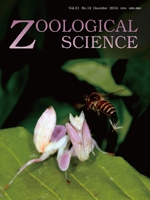Many migratory bird species fly during the night (nocturnal migrants) and have been shown to display some phototaxis to artificial light. During 2006 to 2009, we investigated phototaxis in nocturnal migrants at Jinshan Yakou in Xinping County (N23°56′, E101°30′; 2400 m above sea-level), and at the Niaowang Mountain in Funing County (N23°30′, E105°35′; 1400 m above sea-level), both in the Yunnan Province of Southwest China. A total of 5069 birds, representing 129 species, were captured by mist-netting and artificial light. The extent of phototaxis effect on bird migration was examined during all four seasons, three phases of the moon, and under two weather conditions (mist and wind). Data were statistically analyzed to determine the extent to which these factors may impact phototaxis of nocturnal migrants. The results point to phototaxis in birds migrating in the spring and autumn, especially in the autumn. Furthermore, migrating birds were more readily attracted to artificial lights during nights with little moonlight, mist, and a headwind. Regardless of the initial orientation in which birds flew, either following the wind or against the wind, birds would always fly against the wind when flying towards the light. This study broadens our understanding of the nocturnal bird migration, potentially resulting in improved bird ringing practices, increased awareness, and better policies regarding bird protection.
How to translate text using browser tools
1 December 2014
Factors Influencing Phototaxis in Nocturnal Migrating Birds
Xuebing Zhao,
Mingyan Chen,
Zhaolu Wu,
Zijiang Wang
ACCESS THE FULL ARTICLE

Zoological Science
Vol. 31 • No. 12
December 2014
Vol. 31 • No. 12
December 2014
Bird
nocturnal migration
phototaxis
seasonal variation
wind direction




